|
What is octocoral?
-
A collective term for corals in sub-class Octocorallia
-
Have exactly eight pinnate tentacles
-
Filter feeders and inhabit areas with currents
-
Some shallow water species may contain symbiotic zooxanthellae which provides nutrients to the host
-
Include soft coral (Alcyonacea), gorgonian (Gorgonacea), blue coral (Coenothecalia), organ-pipe coral (Stolonifera) and sea pen (Pennatulacea)
Soft Coral
- Structurally similar to stony corals, but lack a hard limestone skeleton. For support and maintenance of form in large colonies, there are calcareous spicules in their body tissue. The shape, size and orientation of these spicules are important features for scientific classification.
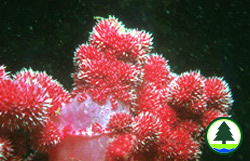 |
| Soft Coral at Crooked Island |
|
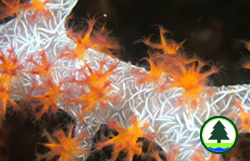 |
| Soft Coral at Port Island |
|
Gorgonians
- Referred as "sea willow", "sea fan" and "sea whip". They are soft and supple. Their skeletons are made of keratin with small calcium spicules scattering on the external tissue of the organisms. Gorgonians often grow on the edges of reef rocks or on the walls of channels. Their colonies extend in a plane and often stand perpendicular to the current, to maximize surface-to-water contact and hence to increase opportunities to catch their food.
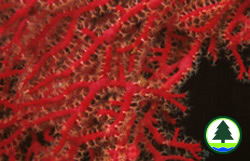 |
| Gorgonian found at Port Island |
|
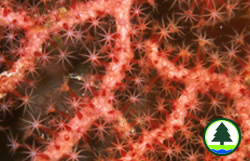 |
| Gorgonian found at Port Island |
|
Sea pens
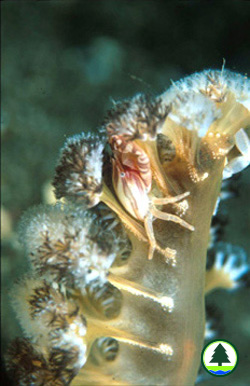
|
| Sea Pen (photo. in Philippines) |
|
- Look like a feather-pen used in ancient times. Their bodies can be divided into two parts, rachis and peduncle. Both sides of the rachis have feather-plates composed of numerous polyps, and the peduncle functions to support the rachis, enabling the organism to stand upright in the sand.
|
Organ-pipe coral
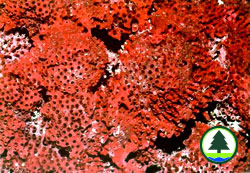 |
| Organ-pipe |
|
- Resembles a Chinese traditional flute. Its skeleton is dark-red and comprises of many parallel tiny tubes which are tightly-bound together into bundles. It inhabits shallow waters and has large polyps of eight tentacles. Living colonies are usually deep blue or dark brown in colour, which is very different from the skeleton.
|
Blue coral
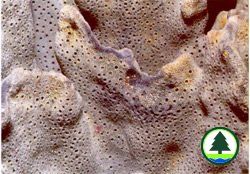 |
| Blue Coral |
|
- Reef-building corals. It often grows in shallow waters and forms huge colony. The colony mainly consists of an encrusting or semi-massive base, with finger- or pillar-shaped branches standing on top. Due to the presence of iron salts, the skeleton is blue in colour but it is often obscured by brownish living tissues.
|
|